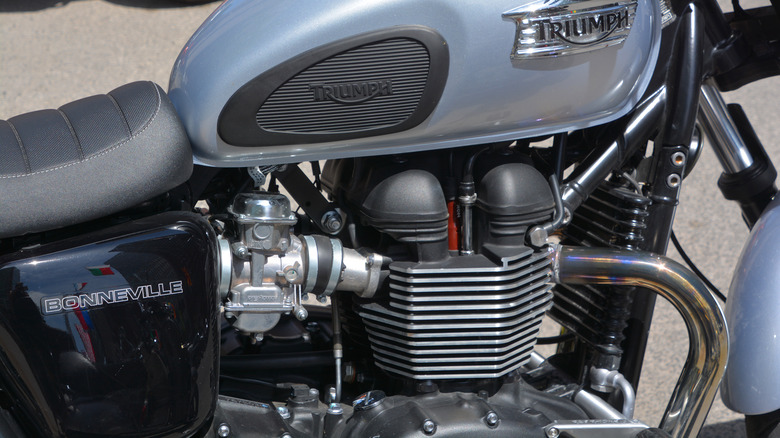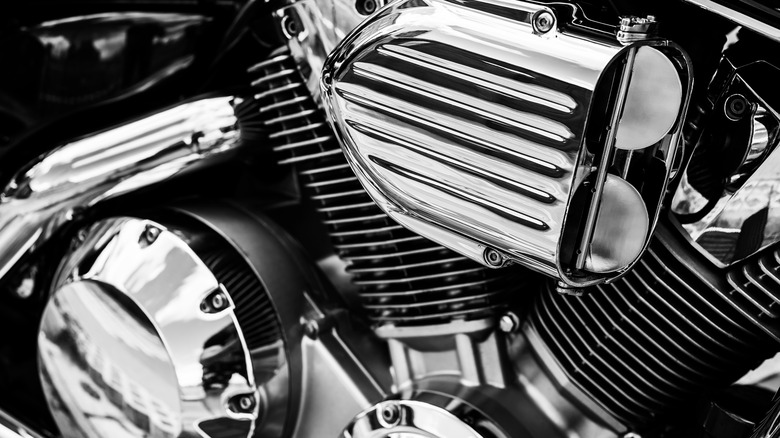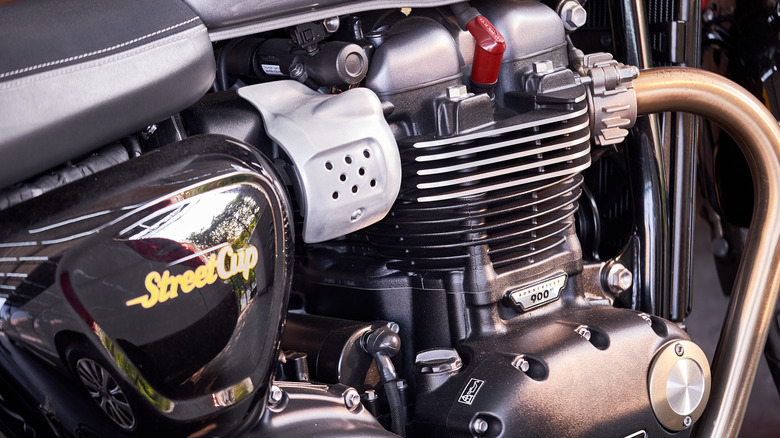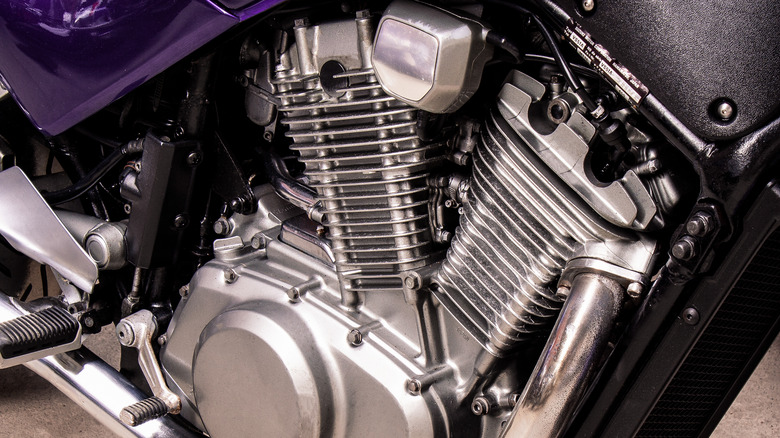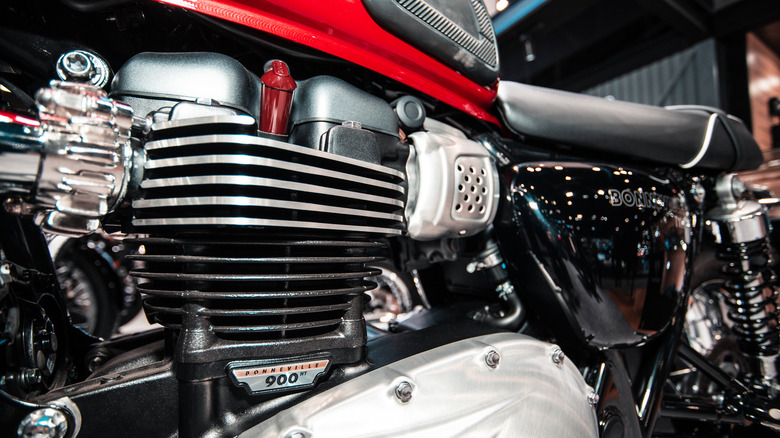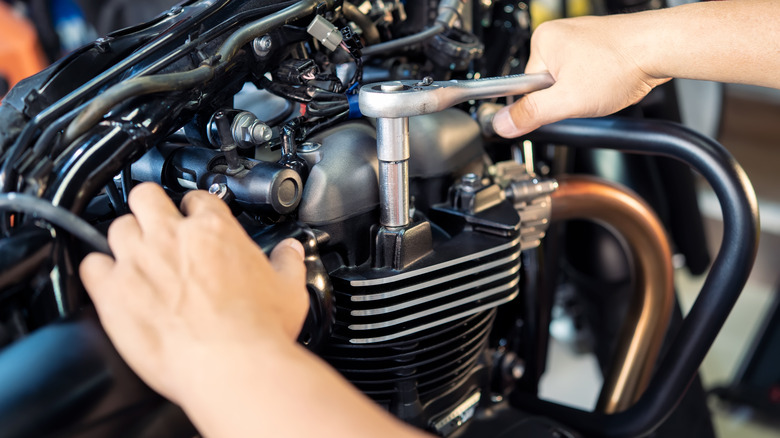V-Twin Vs Parallel-Twin Motorcycle Engines: What's The Difference?
Given their need for compact packaging, motorcycle engines tend to have few cylinders — most commonly one or two. While one-cylinder or thumper engines are small, easy to maintain, and relatively fuel-efficient, they generally lack power output and smoothness due to the lack of major forces to balance out the movement of the single piston.
Therefore, most manufacturers who want to keep things small and simple tend to go with two-cylinder engines, which offer lower vibration, better power, and more convenient packaging. They allow the manufacturer to achieve the same displacement with two smaller, lighter cylinders rather than one large, robust one. These benefits come at the price of efficiency, complexity, and cost.
Two-cylinder engines can be further separated into three general layouts: V-twin, Parallel-twin & Flat-twin. As flat-twin, aka Boxer engines, are relatively rare outside of BMW's motorcycle lineup, we will focus on the two types of engines you are most likely to come across: the V-twin and Parallel-twin. Both of these engines can be mounted transversely or longitudinally. However, the definition of these terms can vary from manufacturer to manufacturer, so for clarity, we will focus on the crankshaft direction. Transverse mounting means the crankshaft runs across the body of the motorcycle. Longitudinal mounting means that the crankshaft runs along the motorcycle.
What are V-Twin engines?
V-twin engines are two-cylinder engines where the cylinders share a common crankshaft but are not parallel with each other. They are arranged in a V configuration, with separate cylinder heads instead. Most manufacturers elect to mount them transversely — this layout has the crankshaft travel across the motorcycle, allowing the cylinders to be in line with the body, i.e., longitudinally. This allows the motorcycle to be narrower and for the torque generated during acceleration to be distributed along the length of the motorcycle. However, the rear cylinder receives poorer airflow and is thus prone to getting very hot.
On the other hand, longitudinally-mounted V-twins generally have better cooling. This is because the cylinders can protrude outwards on either side of the motorcycle and thus receive better airflow. Another benefit is that it can be easier to implement for shaft-driven motorcycles (where the rear wheel is connected to the transmission via a driveshaft rather than a belt or chain) since the crankshaft travels along the body of the bike instead of across it. One major drawback of this layout is that torque under acceleration can cause the motorcycle to twist in one direction.
The angle between the two cylinders can vary from manufacturer to manufacturer, generally between 40 and 90 degrees. 90-degree V-twins are also known as L-twin engines because the cylinders form an L rather than a V. They are relatively uncommon and generally reserved for racing implementations, like in some of the best Ducati motorcycles.
What are Parallel-twin engines?
Parallel-twin engines are two-cylinder engines where the cylinders are mounted in a straight line, oriented in the same direction, sharing a single cylinder head. Most, if not all, manufacturers mount these engines transversely, as this gives them better cooling while also keeping them from protruding too far out from the body of the motorcycle and allows the engine to sit closer to the front of the vehicle. This creates more room for other components, such as the transmission, behind the engine and prevents heat from accumulating directly under the rider's seat.
We could say that parallel-twin engines are technically the only type of inline twin engine where the crankshaft angle is 360 degrees. In this setup, the two pistons travel together, moving up and down simultaneously, paralleling each other, hence the name. Two-cylinder engines operating at different crankshaft angles, such as 180 or 270 degrees, are generally referred to as straight or inline-twin engines.
That being said, the term "parallel-twin" has come to mean any form of inline twin engine regardless of crankshaft angle, which is the definition we will use.
Packaging
V-twin engines are generally narrower than parallel-twin engines, as they are mounted transversely. As this keeps one cylinder behind the other, the overall engine, and thus the whole motorcycle, can be narrower and fit better between the rider's legs. However, this comes at a cost: length and heat. Having the cylinders mounted at an angle to each other means they can extend far forward and rearward, taking up valuable space along the bike's length. Furthermore, the uneven airflow across the front and rear cylinders can cause heating issues in the rear cylinder and exhaust system, though this is only an issue in air-cooled engines.
Meanwhile, parallel-twin engines are generally wider. This allows both cylinders to access equal airflow — it prevents one cylinder from getting significantly hotter than the other in an air-cooled engine. Furthermore, they can be positioned closer to the front of the motorcycle, creating more space behind the engine for other accessories and components, such as the transmission and battery. Parallel-twin engines are also generally lighter than V-twins due to their simpler and more compact construction.
Power and sound
While many believe that V-twins create more power and sound better, both of these attributes are also present in parallel-twin engines.
V-twins don't inherently produce more power — this is often down to other factors such as tuning, displacement, and overall vehicle dynamics. In fact, the added weight and complexity of the engine could mean that a V-twin motor could end up making less power than a well-tuned parallel-twin motor of equal displacement.
As for sound, one factor this comes down to is crankshaft angle — many parallel-twin engines have either 360-degree or 180-degree crankshaft angles, and the modern-day implementation of a 270-degree or cross-plane crankshaft allows for more even ignitions times which sound closer to the rumble of a V-twin motor. However, many engines still use 360 or 180-degree angles, which sound worse to many ears. That being said, what you like is entirely up to you. Aside from this, exhaust setup also greatly impacts the sound quality and should be kept in mind when assessing the sound of an engine.
Cost
Parallel-twin engines are generally cheaper than V-twin engines as their engineering is simpler, and they have fewer parts — both moving and non-moving. For instance, parallel-twin engines need only one cylinder block and head for both cylinders, while each cylinder in a V-twin needs its own as the cylinders are separate instead of directly next to each other. This also applies to other components, such as camshafts, of which a parallel-twin engine would need fewer since they can service both cylinders at once.
The inclusion of a V-twin motor can also increase the overall cost of a motorcycle, as more complex engineering may be required to fit other components within the body of the motorcycle behind the longer engine, compared to a parallel twin, which can be positioned more liberally due to its smaller overall size.
With V-twin engines, other maintenance costs also go up as well. This is because they are less common than parallel-twin engines and need more parts.
